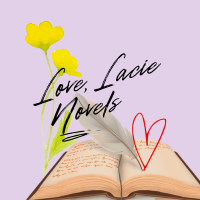Hello, your Fairy God-Librarian here, and in the following post we’re continuing part two of the redundancy of bibliophiles and Harry Potter fans alike.
A couple of blog posts ago, we started our journey with my recommendations for books that would appeal to the average Hufflepuff student, like me. Next, I’m going to talk about my secondary house, Ravenclaw.
Hufflepuffs value kindness, loyalty, fairness for all. Their House colors are the only ones without a metallic sheen (black and yellow) and are represented by the Earth element. However, I want to delve into my second favorite Hogwarts House: Ravenclaw. Ravenclaws value creativity, knowledge, wit. Their House colors are blue and bronze (do not get me started on how the movies changed it to blue and silver, despite silver already being one of Slytherin’s colors) and are represented by the Air element. If you consider yourself of this House, your book choices most likely would twinge your erudite curiosity. You’d most likely crave non-fiction books or fiction books with a unique and creative plot line, probably high fantasy. However, below I have gathered four books from my own personal library that I think would make any confident Ravenclaw happy.
-
A Brief History of Time by Stephen Hawking
-
The Davinci Code by Dan Brown
-
Pride and Prejudice by Jane Austen
-
Astrophysics for People in a Hurry by Neil DeGrasse Tyson
1) Brief History of Time by Stephen Hawking (Genre: Popular Science)
“Humanity’s deepest desire for knowledge is justification enough for our continuing quest. And our goal is nothing less than a complete description of the universe we live in.” -Stephen Hawking, on research
“Intelligence is the ability to adapt to change.” – Stephen Hawking
I wanted to read this book mostly because of these three concepts: how beautiful this edition’s cover is, it’s multigenerational popularity, and its contribution to science and humanity as a whole. A Brief History of Time is Stephen Hawking’s way of explaining the most complex concepts and ideas of physics, such as space, time, black holes, planets, stars and gravity to the average Joe, so that even you and I can better understand how our planet was created, where it came from, and where it’s going (Goeke, 2018, “Four Minute Books”).
This book definitely satisfies the thirst that Ravenclaws have for research and knowledge. What heavier academic concepts can a Ravenclaw learn about than the Earth, quantum mechanics, deep space, and time itself? All of this is credited to Stephen Hawking being one of the most reputable and notorious scientists of the twentieth century.
May he rest in peace.
2) The Davinci Code by Dan Brown (Genre: Detective Thriller)
Investigation is a skill that requires mental creativity, acute observation skills, and the ability to connect seemingly unrelated facts. Throw in superb writing skills, a brilliant and unique plot, fast-paced and edge of the seat scenes, and you would have Dan Brown’s first thriller: The Davinci Code. It’s a perfect blend of erudite investigation and fantastic fiction that would appeal to any Ravenclaw interested in feeding their mind while also being thoroughly entertained.
What lead me to this book was my own hunger for learning, which feels like a slow-burning fuel constantly churning in my mind. Sometimes I want to rest my brain with easy reading/watching, but for the majority of the time, I was to think, solve, create, explore. Really, its an itch that bows to no one but curiosity itself. It’s what lead me to travel, to write books and paint, to read tons of detective books and binge watch Sherlock episodes, to spend the vast majority of my childhood in an imaginative dreamworld. In other words, a perfect reader for Dan Brown’s books.
3) Pride and Prejudice by Jane Austen (Genre: Romantic Literature)
I love everything about Jane Austen’s books. The Georgian and Victorian periods, though not very thrilling or culturally progressive, have a certain charm that fulfill a base need for history and romance. Jane Austen was a master at blending this concept with everyday normal life of the 1700s England. Pride and Prejudice became her most popular novel during her lifetime and centuries later still. I believe that it appeals to the Ravenclaw reader, especially the female Ravenclaw reader, because its intelligent conversation and historical romance with a fictional bent.
I particularly love Elizabeth Bennett, the main character. Elizabeth’s favorite things are books, dancing. walking through the countryside, and genuine conversation. She challenges those around her, especially when it comes to those that expect her to act the regressive role of submissive female. She is strong, bright, an intellectual: perfect for Rowena Ravenclaw’s House had she attended.
4) Astrophysics for People in a Hurry by Neil DeGrasse Tyson (Genre: Non-fiction Science)
I am one of Neil DeGrasse Tyson’s biggest fans. We both share the love of space, but unlike me, he’s a modern genius and can actually comprehend it. I’m left with just the admiration for its beauty, even if the understanding of the math of astrophysics and other space-related fields eludes me.
This book captured my intrigued because of my love for astronomy. The cover itself is one of the most beautiful pieces of art I’ve ever seen, and it reflects the beauty that Tyson writes about within. The research and scholar that fills this book would appeal to all Ravenclaw readers who “keep looking up” (Tyson, “Startalk”) every night.
¡Fin!
I hope you’ve enjoyed reading my recommendations, you redundant Potthead readers. Up next, book recommendations for my tertiary House: Gryffindor.
So, keep reading!
Love,
Lacie 🙂
Goeke, N. (2018). A Brief History of Time Summary. Retrieved November 10, 2018, from https://fourminutebooks.com/a-brief-history-of-time-summary/




